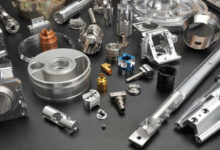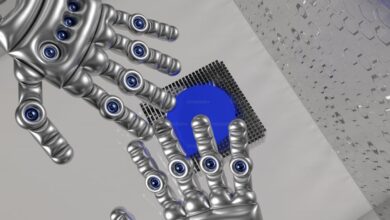What Makes Automation the Future of Ad Creation?

Do you want to make ads that stand out? Predis AI has the best AI ad generator to take your advertising game to the next level. With our cutting-edge technology, you can create stunning, high-converting ads in minutes. Whether you’re a seasoned marketer or just starting out, Predis AI makes ad creation effortless and effective. Try it today!
In the fast-paced world of digital marketing, the ability to create and deploy ads quickly and efficiently is crucial for success. As businesses strive to keep up with the ever-changing demands of consumers, automation has emerged as a game-changing solution in the realm of ad creation. The ability to make ads rapidly and effectively using automated tools not only saves time and resources but also enhances the overall quality and performance of advertising campaigns. Here are six reasons why automation is shaping the future of ad creation.
1. Speed and Efficiency in Ad Production
One of the most significant advantages of automation in ad creation is the speed at which ads can be produced. Traditional methods of creating ads often involve multiple steps, from brainstorming and designing to testing and deploying. This process can take days or even weeks. However, with automation, businesses can make ads in a fraction of the time. Automated tools streamline the entire ad creation process by generating designs, copy, and formats instantly based on predefined templates and data inputs. This speed not only allows businesses to respond quickly to market trends but also enables them to run more dynamic and timely campaigns.
2. Personalization at Scale
Personalization is key to effective advertising, but creating personalized ads for a large audience can be incredibly challenging and time-consuming. Automation solves this problem by enabling businesses to make ads that are tailored to individual consumers at scale. Automated ad creation tools can use data such as demographics, browsing behavior, and purchase history to generate personalized ads that resonate with specific audience segments. This level of personalization increases the relevance of ads, leading to higher engagement rates and better conversion outcomes. As a result, businesses can deliver more impactful advertising experiences without the need for manual intervention.
3. Cost-Effective Ad Production
Creating high-quality ads traditionally requires significant investment in resources, including designers, copywriters, and marketers. For many businesses, especially small and medium-sized enterprises, these costs can be prohibitive. Automation offers a cost-effective alternative by reducing the need for extensive human involvement in the ad creation process. Automated tools can make ads at a lower cost by leveraging AI and machine learning algorithms to generate content, designs, and even optimize ad placements. This not only makes ad creation more affordable but also allows businesses to allocate their resources more strategically.
4. Data-Driven Decision Making
In today’s data-driven world, making informed decisions is essential for successful advertising. Automation empowers businesses to make ads based on real-time data and analytics. Automated ad platforms can analyze vast amounts of data from various sources, such as consumer behavior, market trends, and campaign performance, to optimize ad creation and delivery. This data-driven approach ensures that ads are not only relevant but also strategically targeted to the right audience at the right time. By continuously learning from data, automated systems can refine ad content and strategy, leading to better results and higher ROI.
5. Consistency Across Channels
Maintaining consistency across multiple advertising channels is a challenge for many businesses. Different platforms often require different ad formats and specifications, making it difficult to ensure a cohesive brand message. Automation addresses this issue by enabling businesses to make ads that are consistent across all channels. Automated tools can generate ads in various formats tailored to the specific requirements of each platform while maintaining the core messaging and design elements. This consistency strengthens brand identity and ensures that consumers receive a unified experience, regardless of where they encounter the ad.
6. Scalability for Growing Businesses
As businesses grow, so does the need for more extensive and frequent advertising efforts. Scaling traditional ad creation methods to meet this demand can be both challenging and costly. Automation offers a scalable solution that allows businesses to make ads efficiently, regardless of the volume required. Whether a company needs to produce a handful of ads or thousands, automated tools can handle the workload without compromising on quality or speed. This scalability is particularly valuable for businesses looking to expand their marketing efforts while maintaining cost-effectiveness.
Conclusion
Automation is undoubtedly shaping the future of ad creation by offering unprecedented speed, efficiency, and scalability. From personalized ads to data-driven strategies, automated tools empower businesses to make ads that are not only cost-effective but also highly effective in reaching and engaging their target audience. As technology continues to evolve, the role of automation in ad creation will only grow, making it an indispensable tool for businesses looking to stay competitive in the digital landscape. By embracing automation, companies can streamline their ad production processes, reduce costs, and deliver impactful advertising experiences that drive success.
Unlock the latest news and updates on techpromagazine





